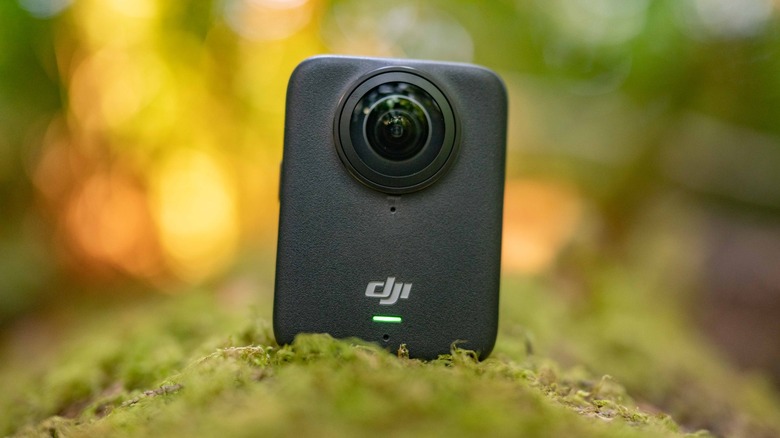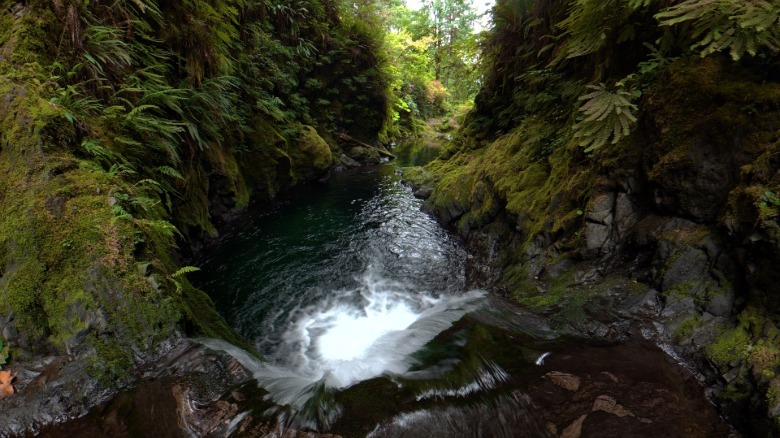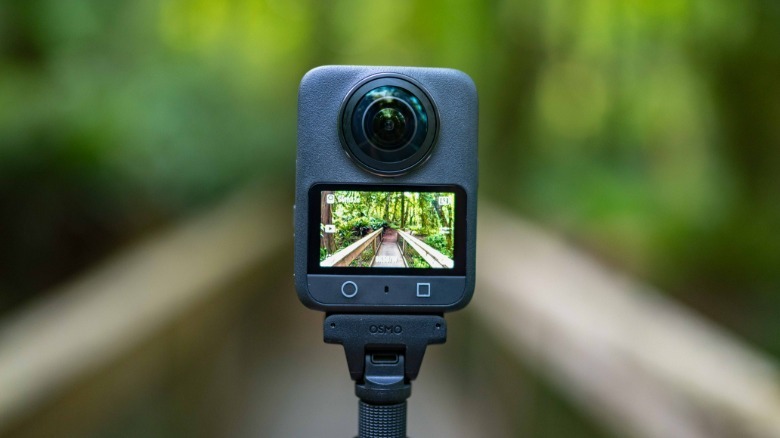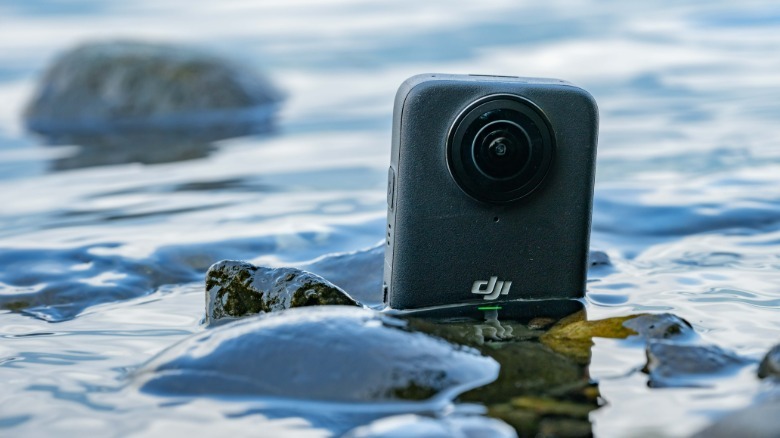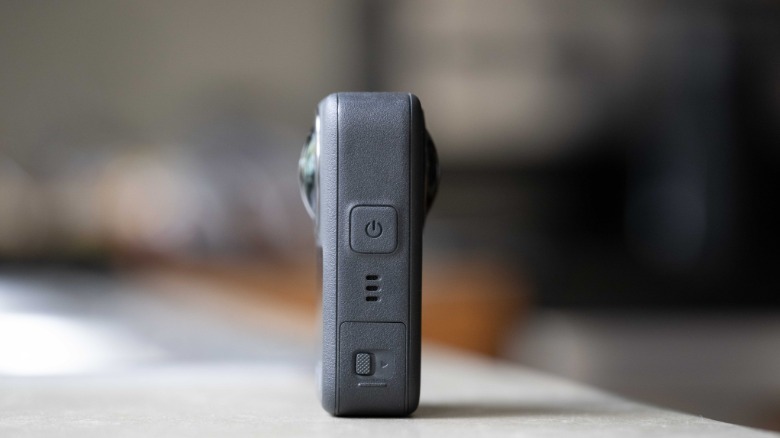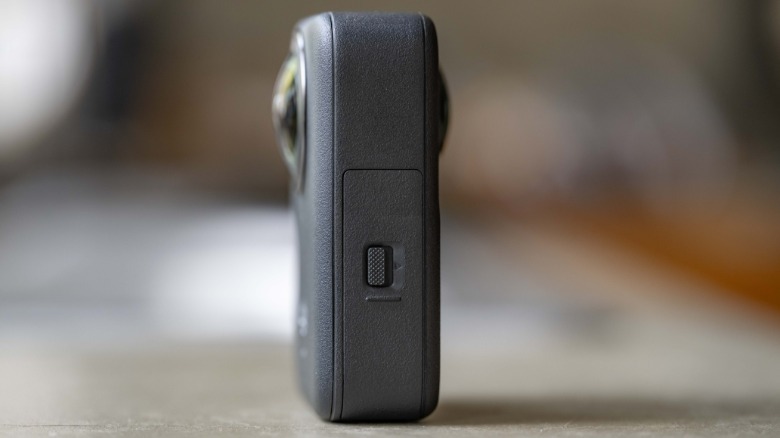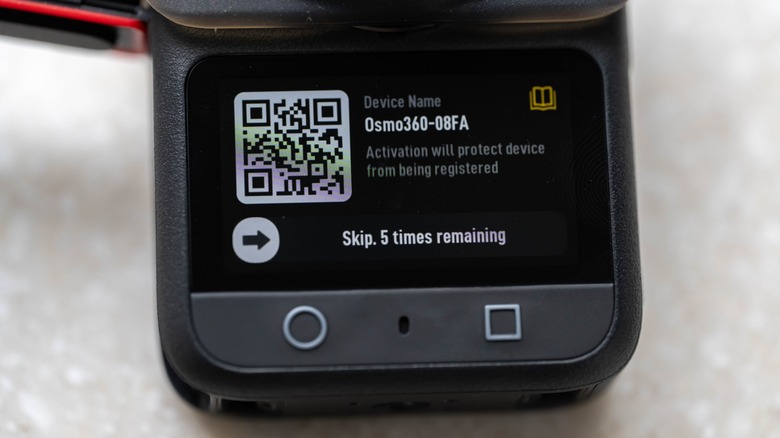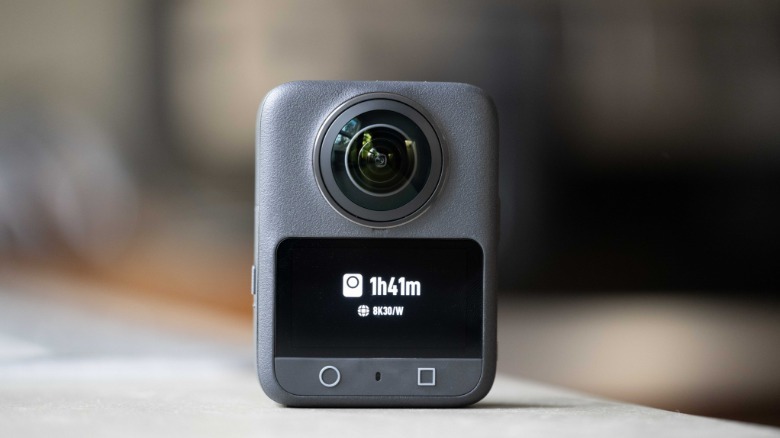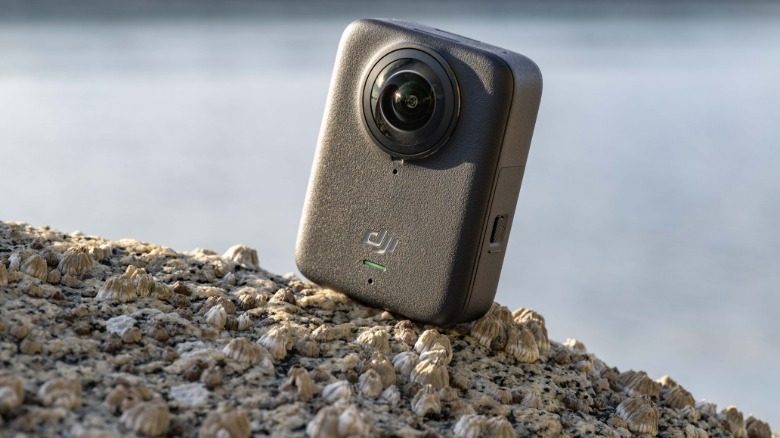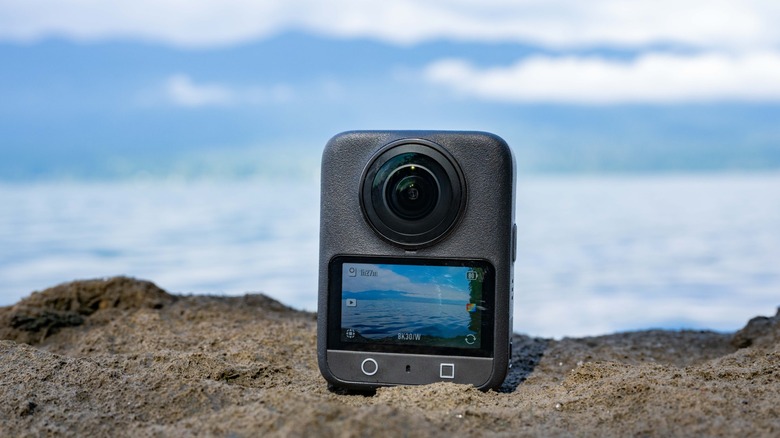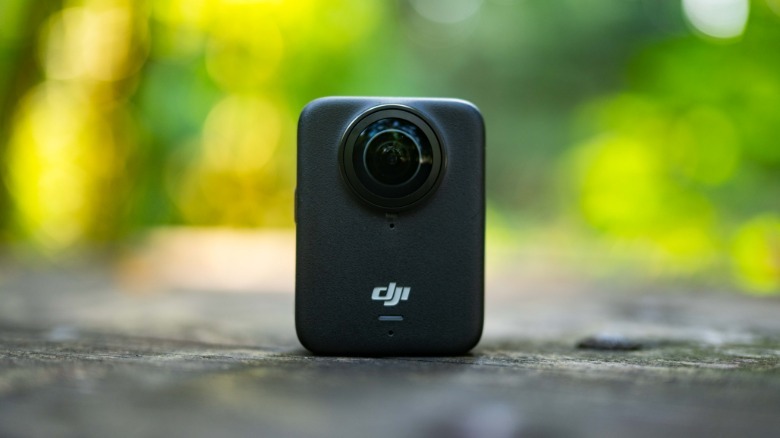DJI Osmo 360 Review: Is It Great Enough To Overlook The Flaws?
DJI is looking to make a splash with its new Osmo 360 camera. For the past several years, the consumer 360 camera market has been almost exclusively the domain of Insta360, but competition is clearly starting to kick into gear. The big standout feature which DJI has in their corner is that the Osmo 360 features a 1-inch sensor. That should give it an advantage over most other consumer 360 cameras when it comes to image quality, and larger sensors are a key selling point for many creators. It remains to be seen, however, if that larger sensor will produce the results we have all come to expect from increased sensor sizes.
There are a lot of questions to be answered about the Osmo 360 (provided here by DJI for this review). Unlike its rivals such as Insta360 and GoPro, DJI doesn't have years of experience with 360 cameras, and this matters both in terms of hardware and software. Unlike traditional single-lens cameras, 360 cameras need to stitch two wide angle images together into as seamless a sphere as possible, and then after that image is captured and processed in-camera, it has to be edited on a mobile device or a computer to achieve a final product. This complex problem makes for one very deep pool which newcomers to the 360 camera spaces must face, and so it must be seen if DJI can nail every angle of a 360 camera right out of the gate.
Excellent image quality
A big question for me going into testing the Osmo 360 was whether or not the vaunted 1-inch sensor would provide the hoped-for improvement to image quality. I used the camera in as many varied scenarios as possible, and pitted it side-by-side with the Insta360 X5 to make sure I came away with an accurate assessment. I'm happy to report that the DJI Osmo 360 does in fact deliver on its promise of superior image quality, though it perhaps doesn't stand out as much as I might have hoped.
Photos and video from the Osmo 360 look very sharp and natural, and it does a great job of handling noise in low light, but where it really shines is color accuracy. This is why my initial impression of the imagery captured with this camera was so positive, because the color science at work here is just so good. As of this writing, DJI has inched ahead with the best looking image quality in a 360 camera.
The capabilities of the Osmo 360 are really very impressive, with still photo capture up to 120 MP (No RAW capture, sadly), and 8K 50fps video recording capability, as well as 4K 120fps in single lens mode, or 4K 100fps in panoramic video mode. Having the capacity to do some limited slow-mo in 8K panoramic recording mode is great, and it enables you to capture more realistic 50fps footage, which is a particular boon for playback using a VR headset.
The Osmo 360 can record in 10-bit and D-LogM, so it's a very useful tool if you want to do a lot of editing in post-processing software. I was pleasantly surprised by how nice footage from this camera is to work with in post.
Tough enough, but with a serious flaw
If the Osmo 360 had been launched in 2024, I would have had nothing to complain about the durability of this device, but unfortunately it's not 2024 any more, and merely being a well-built, waterproof, durable camera isn't enough for a 360 camera in 2025. The Insta360 X5 introduced user-replaceable lenses to their flagship camera earlier this year, and that's a real game changer for the entire genre. With two large, bulbous lenses, 360 cameras are particularly vulnerable to accidental damage, so easily being able to replace those lenses is a big advantage.
Sadly, the DJI Osmo 360 does not offer user-replaceable lenses, and while the company will replace your lens should you damage it, sending in your camera to be worked on is a serious hassle that takes the camera out of commission for a long time. To make matters worse for the Osmo 360, GoPro has teased that their upcoming Max 2 360 camera will feature user-replaceable lenses, putting DJI in the unenviable position of jumping into a pool where they are the odd-man-out when it comes to what has very suddenly become a desirable feature.
Aside from this, the camera is quite robust. It's fully waterproof (though you'll have to wait for an underwater housing to capture clear underwater footage), and tough enough to put up with all the abuse I put it through. I will say, though, that the way the ports latch doesn't feel tremendously secure to me, so I'd recommend being extra careful to make sure they're locked in tight before using the Osmo 360 in a situation where it is liable to come into contact with water.
Internal storage, and plenty of battery capacity
I was happy to discover that the Osmo 360 features 128GB of internal storage, in addition to a microSD card slot. This means that even if you forget your microSD card, you'll have a decent amount of storage on-hand to work with. It eliminates that horrible scenario in which you go to start shooting and realize you've left your card at home. I found that even for a 3-day camping trip where I recorded a ton of panoramic 8K footage, I didn't manage to fill up the internal storage of the Osmo 360.
DJI claims that the Osmo 360 can record up to 100 minutes of 8K 30fps footage on a single charge. While I didn't directly test this claim, I did run the camera to near-empty on numerous occasions, and never felt limited by the capacity of its battery. I'm inclined to believe DJI's battery life claims for the Osmo 360, though of course the actual record time will vary significantly based on your settings.
I did do some long continuous recording sessions, in which I captured 8K 30fps for over an hour. Doing so in a warm theater with very little airflow revealed that the Osmo 360 has a pretty alarming issue with overheating. While this particular session didn't result in a shut down, the camera was so hot that it was painful to touch. While the camera didn't appear to suffer any ill effects, it's a concern worth keeping in mind. Internal audio quality is decent, though not as good as I had hoped, but fortunately the Osmo 360 is compatible with wireless microphones, such as the DJI Mic 2 and Mic Mini.
Software is still in the early stages
Coming from using Insta360's line of 360 cameras, which are now 5 generations deep, meant that I was immediately struck by how spartan the list of available modes in the Osmo 360 is. They get the job done for sure with all the basic functions, such as timelapse and low light modes, but an example of a missing feature is the lack of a dedicated "starlapse" mode, which is something I use all the time with 360 cameras and traditional action cameras from other brands.
With that said, the Osmo 360 can still capture a great timelapse of a star-filled night sky, but you may need to tinker with the manual settings to pull it off. Additionally, the on-screen interface of the Osmo 360 is a little bit janky, especially when it comes to reviewing your footage.
The integration of 360 features into DJI's Mimo app is also rough, and I don't like that you are required to register the device with DJI before using it. Insta360 also typically requires this with their cameras, and unfortunately GoPro did it with their budget Hero camera last year. I don't consider this an acceptable practice, as online registration or activation of a camera should only ever be an optional step.
I did, however, very much enjoy the DJI Studio application for editing 360 footage on desktop. It's clean, simple, and efficient at handling large files. Insta360's desktop application is more feature rich, but I found the layout of the DJI app to be refreshing in how straightforward and easy it is to use. A plugin for Adobe Premiere Pro is also available, but keep in mind that this plugin and a number of key features in DJI Studio are unfortunately currently limited to Mac PCs.
Priced in line with the competition
At $549, the DJI Osmo 360 has the exact same starting price as the Insta360 X5, making the decision between the two cameras even more difficult. Considered on its own, the Osmo 360 certainly delivers good value for money, being essentially able to act as a near-full replacement for flagship action cameras such as the DJI Osmo Action 5 Pro, GoPro Hero 13 Black, or Insta360 Ace Pro 2. The line between action cameras and 360 cameras seems to blur ever further with every new release.
Set side-by-side with the X5, a real sticking point for me remains the lack of user-replaceable lenses in the Osmo 360. DJI will replace the lenses in the Osmo 360 for you for $25, but that means sending it off for some period of time to have the operation done by DJI. Insta360 sells replacement lens kits for $30. That means if you don't mind waiting, the Osmo 360 is potentially slightly more economical over time, but at a significant cost to convenience.
Regarding accessories, I'm very happy to see that the Osmo 360 features both a ¼-20 mounting thread and a magnetic quick release mount. I would have liked to see the classic action camera prongs also integrated into the design, but having a universally compatible ¼-20 mount is great to have nonetheless. A number of accessory bundles are available, such as the Osmo 360 adventure combo at $699.
Conclusion
The DJI Osmo 360 has all the quirks indicative of a first generation product, yet it is nonetheless quite compelling. From a perspective of sheer image quality, it absolutely comes out on top, likely thanks to that large sensor in it. It's easy to overlook a lot of the flaws with this camera thanks to that, and it's a good thing for DJI that they opted to include a 1-inch sensor in their first 360 camera. It's certainly the saving grace of the Osmo 360, and it makes me excited to see what DJI has in store in the future in the likelihood that they make a mark 2 version.
This all begs the question of whether or not you should buy the DJI Osmo 360, and the truth is that despite all the nitpicks, the Osmo 360 is a really solid camera that delivers excellent image quality. You certainly aren't likely to regret buying it, particularly if low light capability is of particular importance to you, or if you're looking for higher framerate options in a 360 camera. However, it must still be said that there are a number of significant metaphorical rough edges left for DJI to sand off.
The DJI Osmo 360 is available starting at $549 from DJI's online store.
